LifeWithMyDogs is supported by our audience. When you purchase through one of our links, we may earn a small affiliate commission. As an Amazon Associate I earn from qualifying purchases. Your cost is not affected.
**********
Have you ever imagined what it would be like to double—or even triple—your furry family? Owning more than one dog might sound like a dream come true for many animal lovers. Picture a home filled with wagging tails, joyful barks, and endless snuggles. But before you dive headfirst into expanding your pack, it’s essential to understand the full spectrum of what it means to live with multiple dogs.
From the unparalleled joy and companionship they bring to the unique challenges of owning more than one dog, this journey is one of both highs and lows. In this article, we’ll explore the myriad benefits of having a multi-dog household and uncover the practical challenges you might face. Whether you’re contemplating adding another pup to your family or just curious about what it entails, read on to discover if a larger pack is right for you!
The Benefits And Challenges Of Owning More Than One Dog: A Detailed Overview
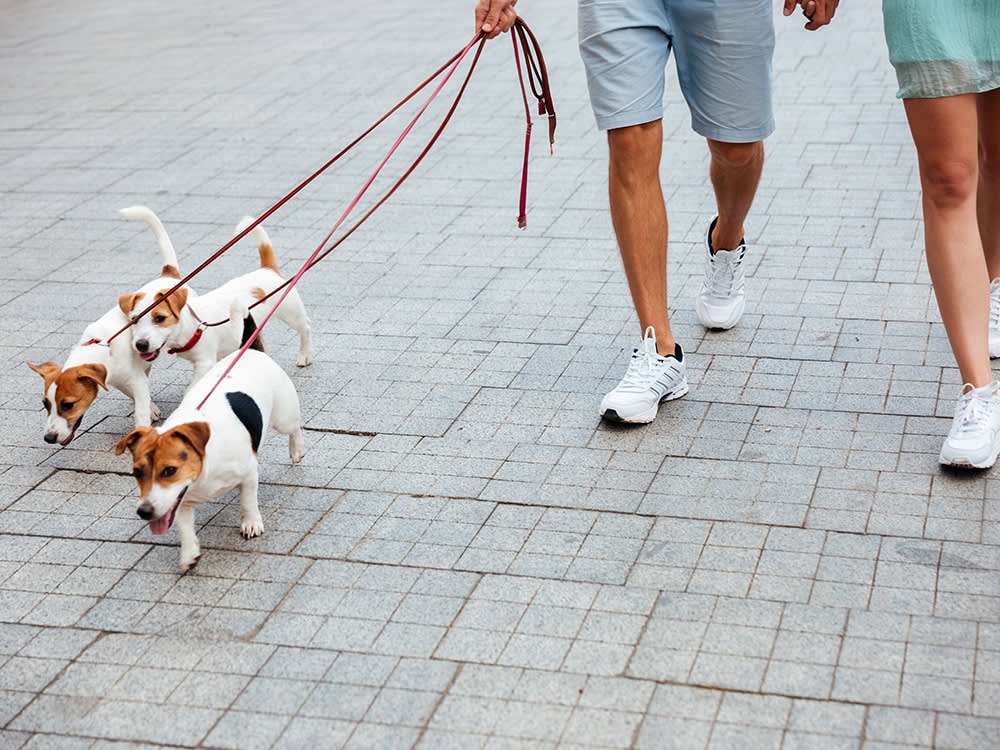
Our family has always had several dogs at one time. We work from home and can care for multiple, so it works for us. However, the benefits and challenges of owning more than one dog must be weighed before making this choice. Owning more than one dog can bring much joy to a household, but it’s not without challenges.
Understanding the pack dynamics and financial implications is crucial when deciding if multiple dogs are right for you. The pros and cons are significant, from more playtime and companionship to higher vet bills and daily care.
By considering each dog’s unique needs and making practical adjustments to your home, you can create a harmonious environment that benefits everyone. Whether addressing their nutritional requirements or ensuring regular veterinary care, being prepared is key to managing a multi-dog household successfully.
Key Takeaways
- Successfully managing a multi-dog household involves understanding how dogs establish hierarchies and individual roles, from establishing the alpha role to recognizing social hierarchies among dogs.
- Owning more than one dog can bring joy but also entails higher expenses. Proper budgeting and readiness for unexpected costs are crucial. Owning multiple dogs includes enhanced companionship, increased exercise opportunities, and positive impacts on owners.
- Owning more than one dog presents unique challenges that require careful consideration. These include addressing behavioral issues, managing time and attention, and coordinating feeding and care routines.
- Picking the right dogs involves understanding their personalities, breeds, age, and energy levels. Additionally, owning more than one dog significantly affects living space and daily routines, necessitating adjustments to accommodate their needs.
- Owning more than one dog can greatly impact health and well-being. Taking preventative health measures and managing illnesses carefully to prevent cross-contamination is essential. Furthermore, owners must adhere to legal requirements relevant to pet ownership.

Understanding the Pack Dynamics
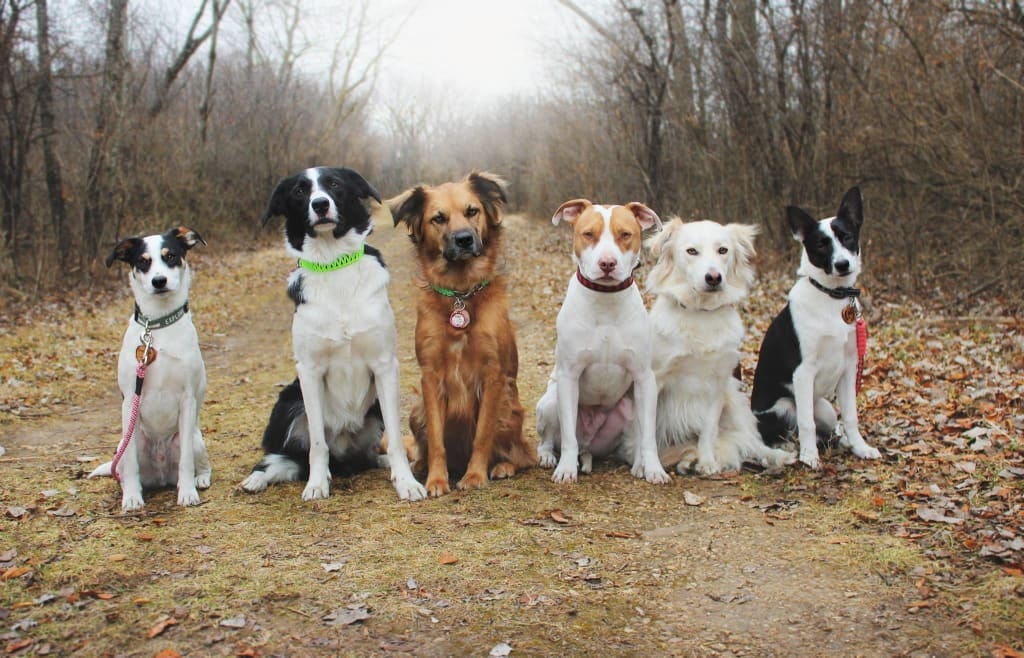
Successfully managing a multi-dog household requires understanding how dogs establish hierarchies and what each dog’s role means. This helps create a peaceful and well-balanced environment.
Establishing the Alpha Role in a Multi-Dog Household
Owning More Than One Dog means understanding that dogs naturally look for a leader. In the wild, the alpha dog leads, and other dogs follow. In your home, when owning more than one dog, you should take on the alpha role to guide your dogs. By being consistent with rules and routines, show your dogs you’re a leader. This helps prevent fights and ensures that each dog knows its place. Training is crucial when owning more than one dog. Commands like “sit,” “stay,” and “come” should be used regularly. This not only teaches obedience but also reinforces who is in charge.
Consistency is more important than severity. Rather than harsh punishment, focus on positive reinforcement. Setting boundaries is also key. For example, feeding the alpha dog first can help establish the hierarchy. It’s important to be fair and calm, showing confidence without aggression.
Recognizing Social Hierarchies Among Dogs
Each dog has its place in the pack. Some dogs naturally take on more dominant roles, while others are more submissive. It’s essential to recognize these roles to avoid conflicts. For example, knowing which dog is more dominant can help me manage interactions and avert fights.
Observing body language is important. Dominant dogs often stand tall, make direct eye contact, and might place their paws on others. Submissive dogs may avoid eye contact, lower their heads, or roll onto their backs.
Understanding these cues lets me step in before tensions rise. Separate spaces for each dog can also help. By providing individual beds and eating areas, I can reduce competition. This ensures that each dog feels secure and respected in its own space.
Did You Know?
Adding a third dog can significantly alter pack dynamics. The existing dogs might form hierarchies, leading to dominance displays or fights.
It’s important to monitor closely during the initial meetings. I recommend introducing them on neutral ground to prevent territorial behavior.
Owning More Than One Dog: Assessing the Financial Implications
Owning more than one dog can bring joy but also higher expenses. It’s important to budget properly and prepare for unexpected costs.

Budgeting for Multiple Dogs
When considering owning multiple dogs, I first evaluate my budget. Food costs will double or triple. A large dog might consume more than a small one. Regular vet visits for vaccines and check-ups add up quickly. Routine care, like grooming, is another regular expense.
I also need to consider licensing and registration fees for each dog. Buying several toys, beds, and other accessories can also be a financial strain. A detailed budget helps me keep track of these recurring expenses.
Unexpected Costs and Emergencies
Unexpected costs are inevitable when owning multiple dogs. Sudden illnesses or accidents require visits to the emergency vet, which can be expensive. I also think about long-term illnesses that might need expensive treatments or medications. Another big unexpected cost can be damage repairs, like chewed furniture or dug-up gardens.
Pet insurance might help offset some of these costs. However, premiums can be higher with multiple pets. A well-stocked emergency fund should be part of my financial plan. It’s prudent to plan for typical monthly costs and unexpected expenses to ensure that owning more dogs doesn’t become a financial burden.
Benefits of Owning Multiple Dogs

Owning More Than One Dog can bring joy and provide significant advantages. Some key benefits of owning more than one dog include enhanced companionship, increased exercise opportunities, and positive impacts on owners.
Enhanced Companionship for Dogs
When you have more than one dog, they can keep each other company. Dogs are social animals and often thrive with a companion. This can reduce boredom and anxiety, making them happier.
If one dog is more active, it can encourage the other to play more. This can be especially helpful if you’re busy and can only sometimes dedicate time to play. Seeing them interact can be delightful, and knowing they are not lonely can bring peace of mind.
Increased Exercise and Socialization
Having multiple dogs often means more playtimes and walks. This leads to increased physical activity for them. Dogs can chase each other, play tug-of-war, and engage in other activities that keep them fit.
Walks become more energetic and can double as socialization opportunities. As dogs meet other pets and people, they become more well-rounded and less prone to fear. Exercise helps maintain their weight and overall health, keeping them active throughout their lives.
Positive Impact on Human Owners
Multiple dogs can also positively affect their owners. Watching dogs play can be relaxing and provide emotional support. The bond between you and each dog can be unique, offering diverse ways to connect.
Training multiple dogs can also be an engaging activity. It requires patience and problem-solving, which can be rewarding. Sharing your home with multiple dogs often creates a lively environment of love and loyalty.
Owning More Than One Dog: Challenges of Managing Multiple Dogs
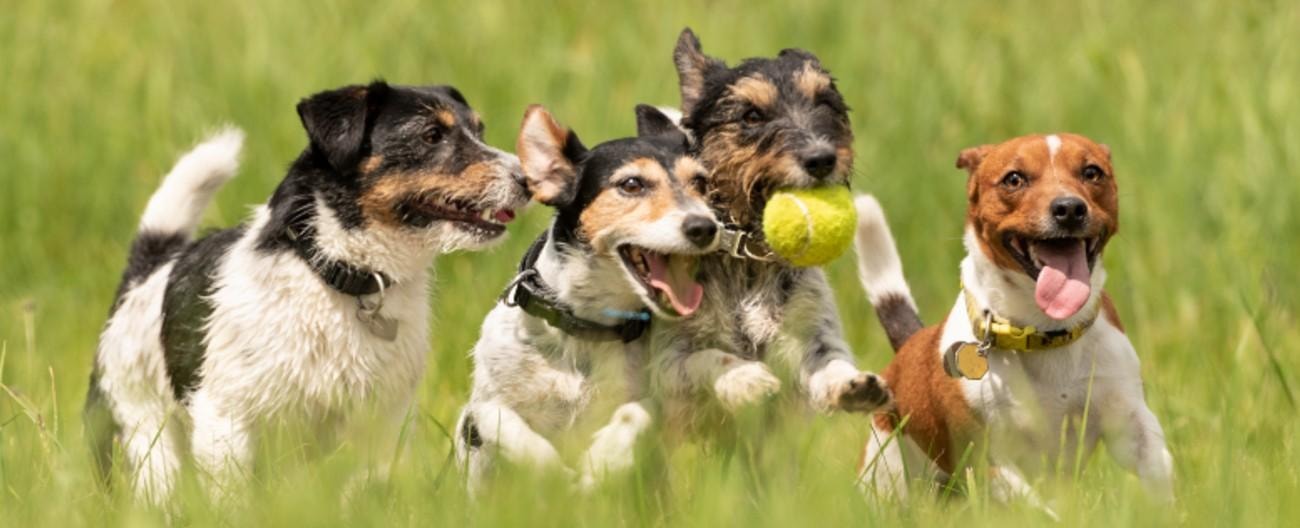
Owning More Than One Dog comes with unique challenges that require careful consideration. The main difficulties of owning more than one dog include dealing with behavioral issues, managing time and attention, and coordinating feeding and care routines.
Behavioral Issues and Training
Training more than one dog at a time can be tough. Each dog has its own personality and training needs. One dog might quickly pick up a command, while another takes longer. Dogs can also compete for attention, leading to rivalry or aggression.
This makes it important to train them separately at first and then gradually together. It’s necessary to establish a clear hierarchy to reduce conflicts. Behavioral issues can also be more pronounced in a multi-dog household. Some dogs might develop anxiety or become territorial. Regular individual and group training sessions can help manage these behaviors.
Time Management and Attention Division
Owning multiple dogs requires more time and energy. Each dog needs exercise, playtime, and affection. Dividing my time evenly between all dogs can be challenging. Walks and play sessions must be extended to ensure each dog gets enough activity. Grooming and healthcare also take up more time.
Vet visits, administering medications, and regular check-ups double or triple with more dogs. In a busy household, ensuring no dog feels neglected is crucial. They all need emotional support to thrive. Balancing work, family, and the needs of several pets requires careful scheduling and consistency.
Synchronizing Feeding and Care Routines
Feeding multiple dogs simultaneously can be chaotic. Each dog may have different dietary needs based on age, size, or health conditions. I have to measure portions carefully to avoid overfeeding or underfeeding any dog. Dogs can become possessive of their food, leading to disputes or aggressive behavior.
I feed my dogs in separate areas to avoid these issues and monitor them to ensure they eat their food. Coordinating vet visits, grooming schedules, and daily care routines requires meticulous planning. Consistency and organization are key to maintaining a harmonious multi-dog household. This means keeping detailed records and reminders for each dog’s needs and appointments.
Choosing the Right Dogs for a Harmonious Home
Picking the right dogs involves understanding their personalities, breeds, age, and energy levels. These factors are crucial to ensuring a happy and balanced home environment.

Considering Dog Personalities and Breeds
Each dog has a unique personality. Some are more social and friendly, while others may prefer solitude. Understanding these traits is crucial when owning more than one dog, as it helps make better decisions. For example, when owning more than one dog, pairing a dominant dog with a submissive one often leads to less conflict.
Breeds play a significant role as well. Certain breeds, like Golden Retrievers, are typically friendly and tolerant, making them good companions for other dogs. On the other hand, some breeds might have strong territorial instincts, which could create tension.
Additionally, it’s wise to look at the breeds’ size and typical behavior patterns. Mixing a small, timid breed with a large, energetic one may cause stress for the smaller dog. Thinking about these characteristics can guide me toward more compatible pairings.
Understanding Age and Energy Level Compatibility
Age and energy levels determine how well dogs might get along. Young puppies usually have high energy and need lots of playtime. Older dogs may be unable to keep up, leading to frustration on both sides.
Dogs with similar energy levels tend to have a smoother relationship. For instance, pairing two high-energy dogs can result in them wearing each other out through play, while two low-energy dogs may enjoy calm, quiet companionship.
Considering the dog’s age is equally important. An older dog may have health issues that a young, rambunctious puppy could aggravate. Balancing these factors ensures that all dogs in the home can coexist comfortably and happily.
The Impact on Home and Lifestyle
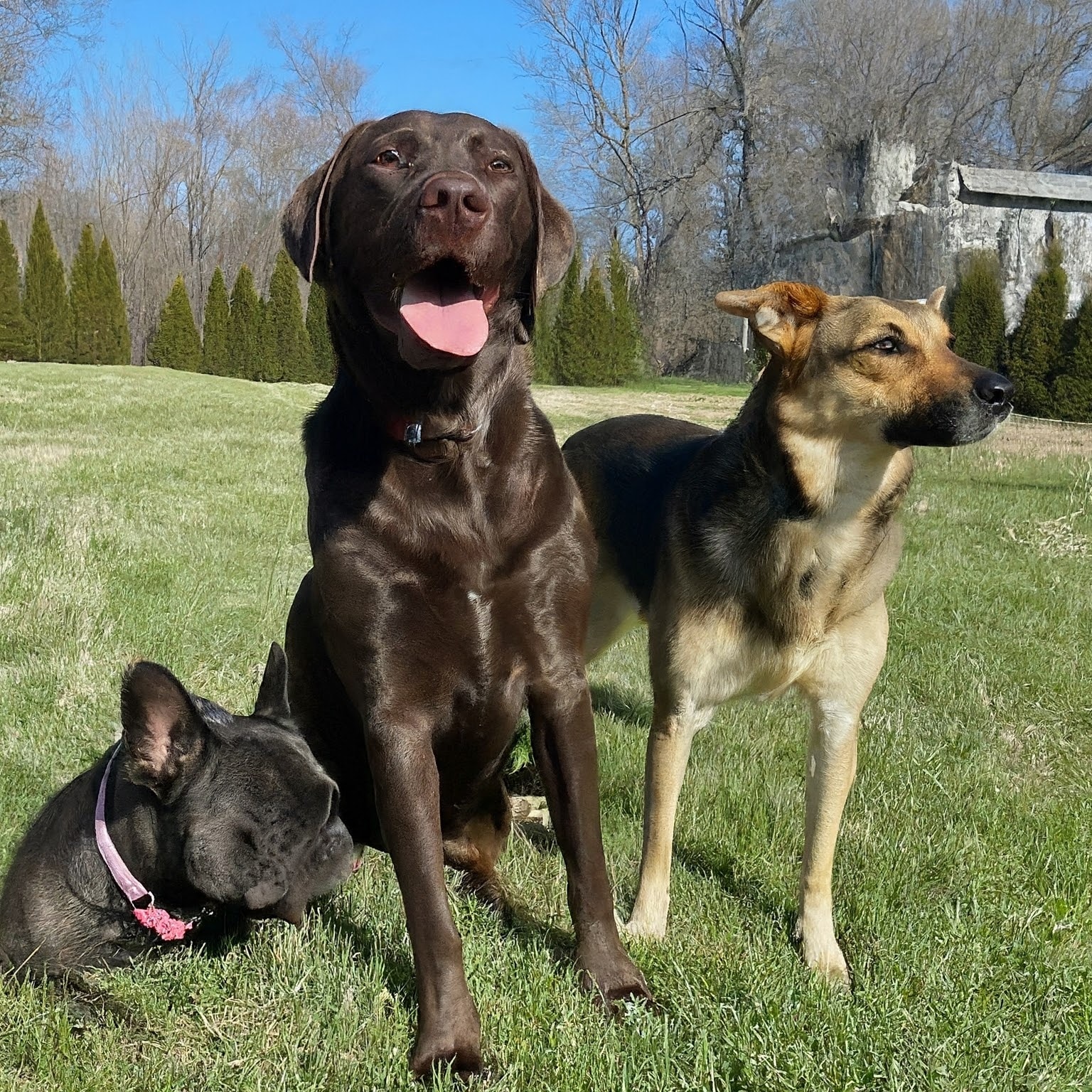
Owning more than one dog significantly affects both living space and daily routines. Key areas to consider include available space for the dogs and the adjustments owners need to make in their lifestyle.
Space and Accommodation Needs
Having multiple dogs means I need more space. Each dog requires its area for sleeping, eating, and playing. So, I need to ensure my home has enough designated spots. This might mean setting up extra crates, dog beds, or play areas inside the house.
Outside space also becomes a priority. A fenced yard is ideal for multiple dogs to run and play safely. If I live in an apartment or have limited outdoor space, I need to plan for frequent walks or trips to dog parks.
Storage space for dog supplies will also increase. I’ll likely need extra room for food, toys, leashes, and grooming tools. Keeping my home organized becomes crucial so I may need additional shelving or storage bins.
Lifestyle Adjustments Required by Owners
Caring for multiple dogs means I need to adjust my daily routine significantly. Feeding times can take longer, and I need to manage different dietary needs. Walking multiple dogs also takes more effort, as I must ensure they all get enough exercise.
Socialization becomes more complex. Each dog will have its own personality and social needs, requiring me to spend individual time with each pet. Training sessions might be more frequent and require more patience to address different behavior issues.
I also need to allocate more time and resources for vet visits. Scheduling appointments and handling multiple medications can make my schedule hectic. Financially, the costs for vet care, food, and supplies will be higher, demanding careful budgeting.
Health and Well-being in Multi-Dog Households
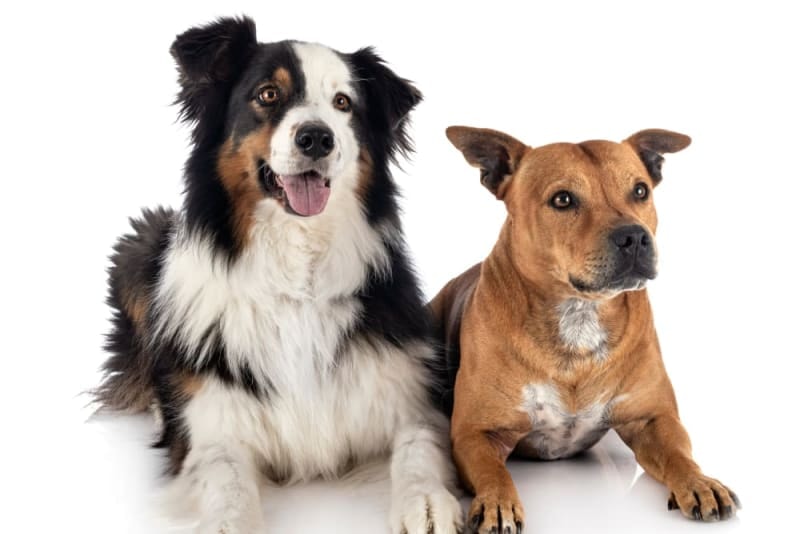
Owning more than one dog can greatly impact health and well-being. Taking preventative health measures and handling illnesses carefully is essential to avoid cross-contamination.
Preventative Health Measures
Preventing health issues in multi-dog households starts with regular veterinary check-ups for each dog. Vaccinations, flea and tick prevention, and regular deworming are crucial. I ensure each dog gets its own space for eating and sleeping, reducing the risk of spreading infections.
Exercise is another important factor. I ensure my dogs get enough physical activity to maintain a healthy weight and reduce stress.
Mental stimulation is equally important, so I rotate toys and engage them in different activities to keep their minds sharp. Good hygiene practices are necessary. I clean their living areas regularly and wash their bedding frequently. Bathing the dogs as recommended by the vet also helps keep their coats and skin healthy.
Dealing with Illnesses and Cross-Contamination
When one dog gets sick, the risk of other dogs catching the illness increases. I isolate the sick dog in a separate area to reduce contact. This helps prevent the spread of contagious diseases. Using separate feeding bowls and water dishes during this time is important.
I follow a strict cleaning regimen, using disinfectants to clean surfaces the sick dog has touched. Washing my hands thoroughly after handling the sick dog is also a must. Monitoring the other dogs’ health closely helps catch any signs of illness early.
Sometimes, the vet might recommend specific antiviral or antibacterial treatments to prevent an outbreak. I follow these recommendations diligently to keep all my dogs healthy. Planning and attention to detail are key in managing the health of multiple dogs effectively.
Legal and Ethical Considerations
When owning multiple dogs, it’s crucial to consider legal requirements. Different regions have specific laws regarding pet ownership, including limits on the number of dogs you can have. Local ordinances may require licenses for each dog and vaccinations, such as rabies shots.
Ethical considerations also play a significant role. I am responsible for ensuring each dog receives adequate care, attention, and love. This includes regular exercise, proper nutrition, and social interactions. Sometimes, having multiple dogs can impact neighbors. Noise complaints and property damage are common issues. The financial impact is another ethical aspect. Owning more dogs means higher costs for food, veterinary care, and other expenses.
Lastly, remember that adopting pets means committing to their lifelong care. Abandoning or neglecting dogs because of unforeseen challenges is unethical. Every dog deserves a loving and stable home. Learn more about the benefits and challenges of owning multiple dogs.
Here’s an additional video about the pros and cons of owning more than one dog.
By:Ron Schmidt Photo
Embracing the Joys and Challenges of a Multi-Dog Household
Owning more than one dog is a journey filled with profound joys and notable challenges. The companionship and energy that multiple dogs bring to a household can be incredibly rewarding, offering a lively and loving environment that enriches both the pets and their owners. The beautiful aspects of a multi-dog family are the laughter from playful interactions, the comfort of shared naps, and the satisfaction of seeing dogs thrive together.

However, a harmonious multi-dog household requires careful planning and dedication. Managing pack dynamics, balancing finances, and adjusting your lifestyle is crucial to ensuring that all dogs receive the care and attention they need. Understanding each dog’s personality, addressing behavioral issues, and staying on top of health and legal requirements are essential for maintaining a happy and balanced home.
By approaching the decision to expand your furry family with thoughtful consideration and preparation, you can embrace the full spectrum of experiences of owning more than one dog. Whether you’re already a dog owner or contemplating adding to your pack, the key to success lies in a blend of love, responsibility, and organization. So, take the time to weigh the benefits and challenges, and you’ll be better prepared to welcome more wagging tails into your life!
Frequently Asked Questions
What Should I Consider Before Getting a Second Dog?
First, think about the time and money required for another pet. Multiple dogs mean more food, grooming, and vet visits. Assessing your dog’s temperament and how they might react to a new family member is vital. Compatibility can make a big difference.
What Are the Common Challenges of Having Multiple Dogs in One Household?
Managing multiple dogs can be tricky. There’s increased noise, more mess, and the potential for conflicts. Training sessions are essential to maintain order and prevent bad habits from spreading. You’ll also need to establish a routine to effectively manage feeding times and outdoor walks.
How Can I Tell if My Dog Would Be Happier With a Canine Companion?
Watch for signs of loneliness or boredom, such as destructive behavior or excessive barking. If your dog seeks out playmates at the park or shows positive interactions with other dogs, they might benefit from having a permanent friend at home. Consulting a veterinarian or a pet behaviorist can offer more insights.
Embark on an Adventure in the Pet Lover’s Paradise!
Dive into a world of furry friends and fantastic finds by connecting with us on social media! Immerse yourself in captivating content insightful product reviews, and become a part of a vibrant community.
Instagram: lifewithmydogs2 Follow us on Instagram for an overflow of heartwarming snapshots and exciting pet escapades!
Pinterest:lifewithmydogs2 Explore a treasure trove of pet inspiration and ideas on Pinterest, where each pin leads you to creative possibilities!
Facebook: 1LWMD Like us on Facebook to keep your finger on the pulse of all pets – from heartwarming stories to the latest pet gear trends!
Twitter: LifeWithMyDogs9 Join the conversation on Twitter, where you can chirp away about the newest pet happenings and stay ahead of the pack with the latest pet trends!


